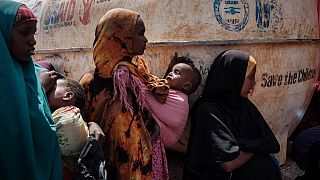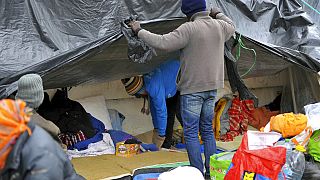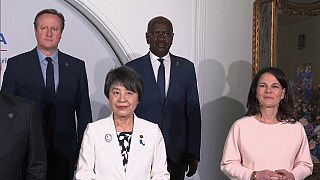climate refugees
The number of women and children migrating from the Horn of Africa to Gulf countries through Yemen has significantly increased and is a cause of concern, according to the head of the International Organization for Migration.
The treacherous journey from Ethiopia, Somalia, and Djibouti through Yemen, called the Eastern Migration Route, has seen a 64% increase in the past year of people seeking better livelihoods, with larger numbers of women with children and children traveling alone, IOM Director General Antonio Vitorino told The Associated Press.
Climate change is a driver of the increased migration, he said.
In the past, women and children would often opt out of the dangerous journey through the desert mostly made on foot. Previously men would leave their families behind and make the trek in the hope of finding jobs and sending money back home.
“The pressure is mounting” as the numbers of migrants rise, said Vitorino who was in Kenya for the launch of a $84 million appeal to support more than 1 million migrants using the route through Yemen.
The desperate migrants are vulnerable to criminal gangs along the route and need protection against rape, violence, traffickers and smugglers, he said.
Some of the migrants are unaware of the dangers including the war in Yemen and the U.N.'s migration organization needs to improve awareness of the perils, he said. For migrants who still choose to take the journey, the organization should offer basic healthcare and other services and in some cases return them to their countries of origin, he said.
“Last year, we have returned voluntarily to Ethiopia 2,700 migrants and upon arrival we provided post-arrival assistance to support them to move back to their regions of origin,” Vitorino said.
Also rising is the migration of people from West Africa through Libya to Europe and the plight of those migrants, particularly those detained in Libya, is a global concern, he said.
“We know where the official detention centers are and we have access to them, not permanent, never alone, but under surveillance of security guards. But we have access to provide assistance," said Vitorino.
But the U.N. organization does not have access to the unofficial detentions centers, which are particularly worrying, he said. Abuses have been widely reported in both official and unofficial detention centers. Libya’s political instability makes it difficult to have the political cooperation needed to dismantle the unofficial detention centers, he said.
The IOM is striving to get more migrants into voluntary return programs in order to reduce those in detention, he said. It's difficult because the number of migrants who want to return is much higher than available flights from Libya, he said.
Vitorino said he hopes the factors that lead to increased migration, like climate change and conflict, can be addressed to reduce the number of people moving away from their homes.
He stressed the need for migrants to pursue legal migration routes, adding that although the process is complicated and cumbersome, it cannot be compared to the life-threatening conditions along illegal routes.












02:20
Coral reefs: Warming ocean waters fuel fourth global bleaching event
02:40
Climate-smart seeds cultivate hope for Kenya's agricultural future
01:53
EU parliament approves new policies that make migration, asylum harder
01:35
38 migrants dead in shipwreck off Djibouti
02:23
Muslims in Sierra Leone navigate heat during Ramadan
Go to video
Criminals making billions a year from sex trade, slavery - UN